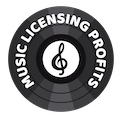Music is a universal language that has the power to evoke emotions and set the mood for any scene. That is why sync licensing has become an essential part of the music industry. If you are a musician, securing a sync license for your music can be a lucrative opportunity to get your music in front of a broader audience and potentially earn money.
In this article, we will provide a step-by-step guide to securing a sync license for your music, from preparing your tracks to pitching to music supervisors.
Step 1: Prepare Your Tracks
Before you start pitching your music, you need to make sure that your tracks are ready for sync licensing. That means ensuring that your tracks are high-quality, properly mixed and mastered, and free of any copyright issues. You should also make sure that your tracks have clear, defined sections, such as intros, verses, choruses, and outros, to make it easier for music supervisors to use your music in their projects.
Step 2: Register Your Music with a Performing Rights Organization
Performing Rights Organizations (PROs) like ASCAP, BMI and SESAC are responsible for collecting and distributing royalties to songwriters and publishers for the public performance of their music. Registering your music with a PRO is essential to ensure that you are properly compensated for the use of your music in any media.
Step 3: Create a Music Library
Creating a music library is a great way to organize your music and make it easily accessible to music supervisors. You can create a library on your website or use a third-party platform such as Musicbed or AudioJungle. Your music library should include clear descriptions of each track, including the genre, mood, and tempo.
Step 4: Research Music Supervisors
Music supervisors are responsible for selecting and licensing music for TV shows, movies, commercials, and other media projects. Researching music supervisors is essential to understanding their musical preferences and the types of projects they work on. You can find music supervisors’ contact information on industry websites, such as IMDB or LinkedIn, and reach out to them directly to pitch your music.
Step 5: Pitch Your Music
When pitching your music, you should personalize your message to the music supervisor, highlighting why your music would be a great fit for their project. You can also include links to your music library and encourage them to listen to your tracks.
Step 6: Negotiate the Sync License
If a music supervisor is interested in using your music, they will negotiate a sync license with you. A sync license is a legal agreement that allows the use of your music in a specific media project. The terms of the sync license will include the length of time your music can be used, the territory where it can be used, and the amount of money you will be paid for its use.
Step 7: Deliver Your Music
Once you have negotiated the terms of the sync license, you will need to deliver your music to the music supervisor in the format they require. Typically, music supervisors will ask for a high-quality WAV file or an MP3 with a high bitrate.
Securing a sync license for your music can be a great way to get your music in front of a broader audience and potentially earn money. By following these steps, you can prepare your music for sync licensing, research music supervisors, pitch your music, negotiate a sync license, and deliver your music to the music supervisor. Remember that patience and persistence are key, and that building relationships with music supervisors can lead to more opportunities in the future.
To find out more about music licensing, tap here and check out our Free Training Video, “Where The Money’s Hiding in the Music Business, in 2023” This Training Solves the Biggest Problem Facing Professionals Today.

